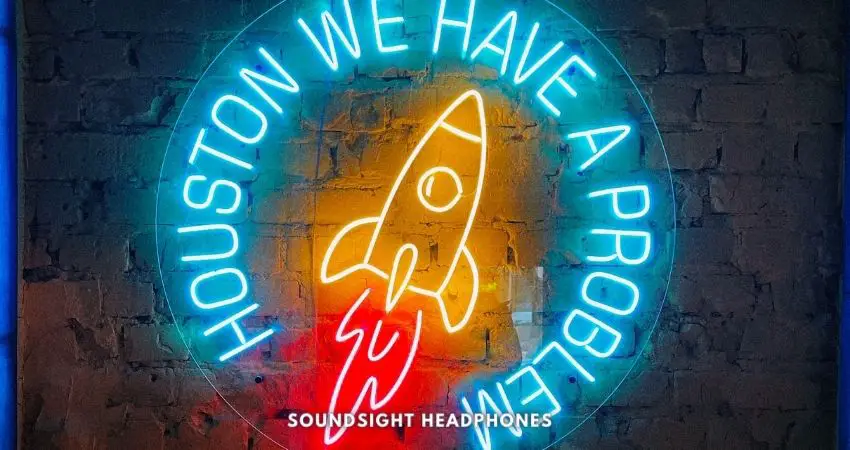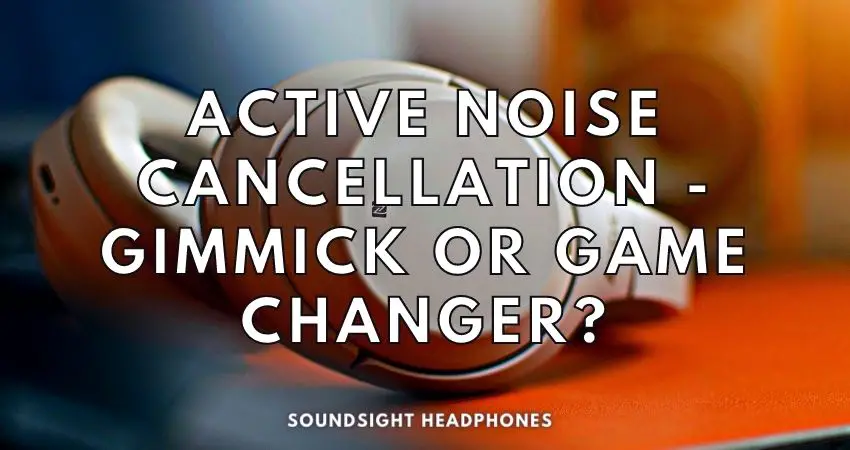A question that has been in the back of many people’s minds when buying headphones is whether active noise reduction actually makes a difference or if it’s just a gimmick. The answer is a simple, “no, it’s not a gimmick.” But the effectiveness and applicability of the active noise-canceling technology determine whether ANC is a feature you should pay for.
For some, active noise reduction is not worth the money, and others even consider it a gimmick. Nevertheless, in this article, I explain why active noise reduction technology is not just a fad but a feature worth paying for.
Active noise-canceling headsets do make a difference
The noise reduction provided by the active noise cancellation system is most noticeable in the low frequencies, which are the sounds most commonly heard in our daily lives. Human speeches, traffic noise, appliances, and other sounds fall under the low-frequency part of the audio spectrum.
Reducing the low-frequency noise that bothers us daily is what makes the active noise cancellation technology valuable. As such, active noise reduction attenuates the sounds that the ear pads cannot isolate passively. For this reason, you cannot achieve a perfect listening environment without ANC.
ANC provides additional noise attenuation
On average, a pair of headphones with ANC will give you a 15 dB reduction in the low-frequency noise. With ANC on, you’ll be able to tune out the din of a busy street or office without turning down the volume to listen to lower volumes overall.
This benefit may not be what you expect from ANC headphones. A -15 dB reduction sounds small, but the loudness doubles every 3 dB, and the perceived loudness doubles every 6 dB. So a 15 dB reduction is equivalent to about a 50% decrease in perceived noise level, which makes a difference when listening to music with or without ANC.
The only way to get an idea of how useful ANC headphones are is to spend some time in noisy environments and try them with and without the Active Noise Cancellation. When you reduce the first third of the audio spectrum by -15 to -20 dB, it’s hard not to be amazed by the noise-canceling effect you get from ANC technology.
Powerful active noise-canceling headphones aren’t necessarily expensive
It has long been a misconception that effective active noise-canceling headphones must be expensive. The noise reduction technology behind them is different from that of high-end ANC headphones, but many entry-level ANC headphones, like the Soundcore Life Q30, offer high noise reduction at a cheap price.
The sound quality of these ANC headphones is usually average, and they don’t have the most appealing design and craftsmanship quality. But they provide great noise reduction, which is the limelight of a good pair of ANC headphones. While some inexpensive headphones offer good noise reduction, not all of them are equally good, and you need to learn how to properly purchase active noise reduction headphones. LINK HERE
I mentioned that ANC provides an average of -15 dB of noise attenuation, which is an estimate of the attenuation provided by some of the weaker ANC headsets. Well, that number isn’t always accurate, and it can sometimes be as high as 20 dB, even for headsets priced between $100 and $200. If you’re on a budget, don’t be discouraged into thinking that only the latest Bose or Sony noise-canceling headphones offer sufficient sound attenuation.
Budget active noise-canceling headphones can make a difference in how you listen to music and deal with background noise. If you’re in a noisy environment and can’t get away from it, there’s no reason to spend a lot of money on Bose QC45 or Sony WH-1000XM4 headphones.
Active noise-canceling creates a quieter listening experience
The best active noise-canceling headphones on the market can reduce noise levels by 20 dB or more, creating a quiet and relaxing listening experience like no other headphones.
Typically, high-end ANC headphones’ effectiveness becomes apparent as you approach the 1,000 Hz mark, where most ANC headphones are the least effective. Headphones like the Bose 700, Bose QC 35 II, and Apple AirPods Max show significant noise reduction in the 1,000 – 2,000 Hz range, unlike entry-level ANC headphones and even Sony’s flagship WH-1000XM4.
In general, high-end headphones with noise cancellation have huge noise attenuation and only differ in the frequency ranges they attenuate; they’re good at attenuating some frequencies while weak on others. Apple AirPods Max is fairly good in the upper mid-range, whereas Sony WH-1000XM4 has a slight edge in the sub-bass region.
When you listen to your environment with noise reduction turned on, there is a noticeable difference in the loudness of the hard-to-suppress frequencies and a more considerable distinction in most low frequencies.
All in all, if you opt for a top-quality active noise-canceling headset, the difference is inevitable. As such, it’s hard to argue with the importance of ANC technology and call it a gimmick.

Issues with active noise cancellation
There are a few reasons why active noise-cancelling headphones are considered useless or ineffective, and this is due to the common problems that ANC technology faces:
- Weak mid-range and upper-frequency noise attenuation
- Humming or hissing noises when ANC is on in the treble and sub-bass range
- White noise in hybrid ANC headphones
- Doesn’t handle well sharp noises
- Weak noise reduction on windy weather
- Slight reduction in audio quality
These differences only exist between quality active noise-canceling headphones and budget ones that feature poor implementation or lower-quality components.
Even in the high-end of the spectrum, active noise reduction technology is not perfect, and as we noted in the comparison between active and passive noise reduction, its noise reduction performance is not always consistent. Still, ANC greatly improves the listening experience and is very reliable most of the time.
The distinction that ANC technology makes is like day and night. However, for many people, active noise-canceling headphones may not be worth the money, and others may not need it.
FAQ on whether active noise reduction makes a difference
Are active noise-canceling headphones only effective for air travel?
No, while active noise cancellation is most effective in low-frequency sounds, there are a variety of sounds other than aircraft engine noise specific to environments where the headphones provide a benefit. The low-frequency attenuation is what makes active noise-canceling headphones a great travel companion, but they’re not exclusively for that use; it’s just an added bonus.
Active noise-canceling headphones reduce a variety of sounds, from car engine noise or background conversations to barking dogs and chirping hummingbirds. In addition, these headphones can also eliminate noise from appliances and machinery.
What is the biggest difference ANC headphones make in a person’s life?
The biggest difference ANC headphones make in a person’s life is that they provide increased hearing safety by blocking out harsh noise. Another great benefit of noise-canceling headphones is the attenuation of human voices. Headphones with ANC are a must if you want to cut out all distractions in a busy environment where people are talking and shouting.
Conclusion
In the end, active noise-canceling headphones are a good investment. They can eliminate most unwanted sounds, which is a real benefit in terms of peace and listening enjoyment.
While some people were skeptical of ANC technology, believing that ANC headphones offer no real benefit, I hope that they can appreciate just how useful ANC headphones can be after reading this article.
So far, are you a fan of active noise-canceling headphones? Or do you think ANC technology is just a gimmick? Share your thoughts with us in the comments below.
